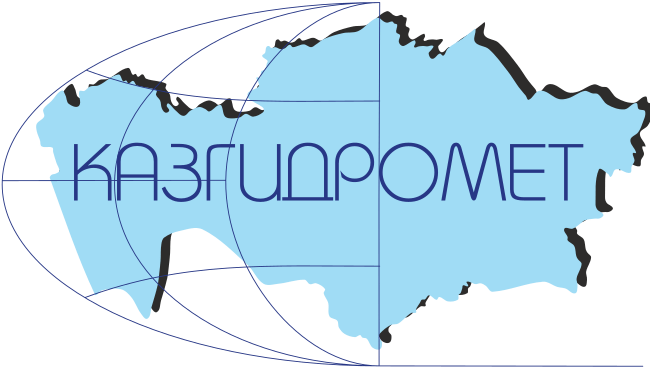CHEMICAL ELEMENTS IN THE BOTTOM SEDIMENTS OF THE POLLUTED SECTION OF THE SHAGAN RIVER
DOI:
https://doi.org/10.54668/2789-6323-2025-119-4-190-204Keywords:
river, pollution, chemical elements, bottom sediments, geoaccumulation indexAbstract
The issue of radioactive and chemical pollution of natural water bodies remains relevant in regions affected by nuclear weapons testing. One such object is the Shagan River, located within the Semipalatinsk Test Site. Of particular concern is the «old channel», where contaminated groundwater and fracture water discharge into the surface flow.
The aim of this study is to identify the patterns of chemical element accumulation in the bottom sediments of the «old channel» of the Shagan River.
The scientific significance lies in clarifying migration and accumulation processes of chemical elements under conditions of localized radioactive contamination. The results provide insights into the transformation of the geochemical background in rivers exposed to long-term technogenic impact, supporting the development of monitoring and forecasting systems.
The methodology included field sampling, laboratory analyses (atomic absorption spectrometry, inductively coupled plasma mass spectrometry), statistical data processing, and GIS-based mapping. Contamination of bottom sediments was assessed using the geoaccumulation index (Igeo) and comparison with Clarke values.
The results showed geochemical series indicating elevated element concentrations in the upper continental crust (Sr > U > Ca) and clay shales (Sr > Ca > U > Na > Mg). According to Igeo, bottom sediments of the Shagan River ranged from unpolluted to heavily polluted: Li, Mg, K, and Fe corresponded to class 0, Na and U to classes 1–2 (unpolluted to moderately polluted), while Ca and Sr fell into class 3 (moderately to heavily polluted).
This study contributes new empirical data on the geochemical characteristics of radioactively contaminated river systems and establishes a basis for further research on ecological and human health risks. The findings also have practical value for environmental protection and the development of long-term monitoring programs.
References
Aktayev M., Subbotin S., Aidarkhanov A., Aidarkhanova A. K., Timonova L. V., Larionova N. (2024). Characterization of geological and lithological features in the area proximal to tritium-contaminated groundwater at the Semipalatinsk test site. PLOS ONE, 19, e0300971. https://doi.org/10.1371/journal.pone.0300971
Timonova L. V., Lyakhova O. N., Lukashenko S. N., Aidarkhanov A. O., Kabdyrakova A. M., Serzhanova Z. B. (2020). Tritium distribution in soil in the area of “Atomic” Lake near the Semipalatinsk Test Site. Eurasian Soil Science, 53(3), 355–361. https://doi.org/10.1134/S1064229320030096
Айдарханов А. О., Актаев М. Р., Есимбеков А. Ж., Анисимов В. С. Определение и локализация каналов поступления ³H в воды р. Шаган // Радиация и риск. – 2013, - №22(4), - С. 66-73. ISSN 0131-3878.
Комлев А. В., Зеленский К. Л., Кокежанов Б. А., Кириллов А. В. Изучение возможных путей миграции трития в бассейн р. Шаган // Вестник НЯЦ РК. – 2013, - №4, - С. 96 -101.
Айдарханов А. О., Лукашенко С. Н., Субботин С. Б., Эдомин В. И., Генова С. В., Топорова А. В., Ларионова Н. В., Пестов Е. Ю. Состояние экосистемы р. Шаган и основные механизмы ее формирования // Актуальные вопросы радиоэкологии Казахстана / под ред.. – Вып. 2. – Семипалатинск: Дом печати, 2010. – С. 9–55. – URL: https://irse.nnc.kz/wp-content/uploads/2018/10/Vypusk_2_rus.pdf
Субботин С. Б., Лукашенко С. Н., Айдарханов А. О., Ларионова Н. В., Яковенко Ю. Ю. Радиоактивное загрязнение техногенными радионуклидами компонентов экосистемы реки Шаган // Проблемы биогеохимии и геохимической экологии. – 2010, – № 3 (14), – С. 106–114.
Актаев М. Р., Лукашенко С. Н., Айдарханов А. О., Ляхова О. Н. Характер загрязнения тритием вод р. Шаган в районе «Атомного» озера // Вестник НЯЦ РК. – 2017. – Т. 4, № 2. – С. 5–8.
Дюсембаева М.Т. Эколого-геохимические особенности некоторых водных объектов Семипалатинского испытательного полигона / М. Т. Дюсембаева, Н. Ж. Мухамедияров, Г. М. Есильканов, А. Ж. Ташекова, А. О. Айдарханов. – Курчатов : ИД «Интеллект», 2023. – 268 с.
Gorlachev I., Kharkin P., Dyussembayeva M., Lukashenko S., Gluchshenko G., Matiyenko L., Zheltov D., Kitamura A., Khlebnikov N. (2020). Comparative analysis of water contamination of the Shagan River at the Semipalatinsk test site with heavy metals and artificial radionuclides. Journal of Environmental Radioactivity, 213, 106110. https://doi.org/10.1016/j.jenvrad.2020.106110
Ташекова А. Ж., Лукашенко С. Н., Койгельдинова М. Т., Мухамедияров Н. Ж. Характеристика элементного состава воды р. Шаган // Вестник КрасГАУ. – 2016, – № 12, – С. 141–146.
Yan X., Yang W., Pu Z., Zhang Q., Chen Y., Chen J., Xiang W., Chen H., Cheng Y., Zhao Y. (2025). Responses of typical riparian vegetation to annual variation of river flow in a semi-arid climate region: Case study of China’s Xiliao River. Land, 14(1), 198. https://doi.org/10.3390/land14010198
Xing J., Wang L., Zhao J., Zhai T. (2024). Hydrochemical variation characteristics and driving factors of surface water in arid areas—a case study of Beichuan River in Northwest China. Frontiers in Environmental Science, 12, 1493390. https://doi.org/10.3389/fenvs.2024.1493390
Al-Dabbas M., Al-Shamma’a A., Ghafel K. (2018). Evaluation of Gharraf River water for different uses, South Iraq. Iraqi Journal of Science, 59(3C), 1697–1709. https://doi.org/10.24996/ijs.2018.59.3C.15
Xue Y., Song J., Zhang Y., Kong F., Wen M., Zhang G. (2016). Nitrate pollution and preliminary source identification of surface water in a semi-arid river basin, using isotopic and hydrochemical approaches. Water, 8(8), 328. https://doi.org/10.3390/w8080328
Григорьев Н. А. Распределение химических элементов в верхней части континентальной коры. – Екатеринбург : УрО РАН, 2009. – 383 с.
Kulbat E., Sokołowska A. (2019). Methods of assessment of metal contamination in bottom sediments (Case study: Straszyn Lake, Poland). Archives of Environmental Contamination and Toxicology, 77(3), 465–478. https://doi.org/10.1007/s00244-019-00662-5
Liu P., Zheng C., Wen M., Luo X., Wu Z., Liu Y., Chai S., Huang L. (2021). Ecological risk assessment and contamination history of heavy metals in the sediments of Chagan Lake, Northeast China. Water, 13(7), 894. https://doi.org/10.3390/w13070894
Zhao S., Li Y., Liu D., Li B., Xiao H., Cheng W., Li A., Chong J. (2016). Spatial distribution, ecological risk assessment and source identification for nutrients and heavy metals in surface sediments from Tangxun Lake, Wuhan, Central China. Nature Environment and Pollution Technology, 15(4), 1417–1425.
Müller G. (1969). Index of geoaccumulation in sediments of the Rhine River. GeoJournal, 2(1), 108–118.
Ostrovsky I., Tęgowski J. (2010). Hydroacoustic analysis of spatial and temporal variability of bottom sediment characteristics in Lake Kinneret in relation to water level fluctuation. Geo-Marine Letters, 30(3–4), 261–269. https://doi.org/10.1007/s00367-009-0180-4
Middelburg J. J., Levin L. A. (2009). Coastal hypoxia and sediment biogeochemistry. Biogeosciences Discussions, 6(3), 3655–3706. https://doi.org/10.5194/bgd-6-3655-2009
Sidoruk M. (2023). Pollution and potential ecological risk evaluation of heavy metals in the bottom sediments: A case study of eutrophic Bukwałd Lake located in an agricultural catchment. International Journal of Environmental Research and Public Health, 20(3), 2387. https://doi.org/10.3390/ijerph20032387
Świercz A., Tomczyk-Wydrych I., Bąk Ł. (2022). Quality of bottom sediments of Sołtmany Lake (Masurian Lake District, Poland) in the light of geochemical and ecotoxicological criteria—Case study. Water, 14(13), 2045. https://doi.org/10.3390/w14132045
Alieva E., Abdykadyrova R., Totubaeva, N. (2025). Assessment of contamination and accumulation of heavy metals in sediments of Lake Issyk-Kul. Grassroots Journal of Natural Resources, 8(1), 874–893. https://doi.org/10.33002/nr2581.6853.080137
Sarker P., Rahaman M. S., Kabir M. M., Al Mamun A., Maruo M. (2021). Evaluation of contamination and accumulation of heavy metals in the Dhaleswari River sediments, Bangladesh. International Journal of Environment, 10(1), 62–75. https://doi.org/10.3126/ije.v10i1.38399
Liu C.-Y., Wilson D. J., Hathorne E. C., Xu A., Pogge von Strandmann P. A. E. (2023). The influence of river-derived particles on estuarine and marine elemental cycles: Evidence from lithium isotopes. Geochimica et Cosmochimica Acta, 361, 183–199. https://doi.org/10.1016/j.gca.2023.08.015
Ma Y., Qin X., Pan T., Chen J., Jiang Z., Ding C., Zhang D., Zhang,F., Feng N., Liu C., Li Q., Ren E. (2024). Sedimentary environment and source analysis of sedimentary lithium deposits in Dezong Mahai Salt Lake, Qaidam Basin. Sustainability, 16(23), 10561. https://doi.org/10.3390/su162310561
Goldhaber M., Morrison J., Holloway J., Wanty R., Helsel D., Smith D. (2009). A regional soil and sediment geochemical study in northern California. Applied Geochemistry, 24(8), 1482–1499. https://doi.org/10.1016/j.apgeochem.2009.04.018
Langmuir D. (1997). Aqueous environmental geochemistry (601 p.). Englewood Cliffs, NJ: Prentice-Hall.
Downloads
Published
How to Cite
Issue
Section
License
Copyright (c) 2025 Арай Темиржанова, Жанат Байгазинов, Нурлан Мухамедияров, Медет Актаев, Касым Дускаев

This work is licensed under a Creative Commons Attribution-NonCommercial 4.0 International License.





